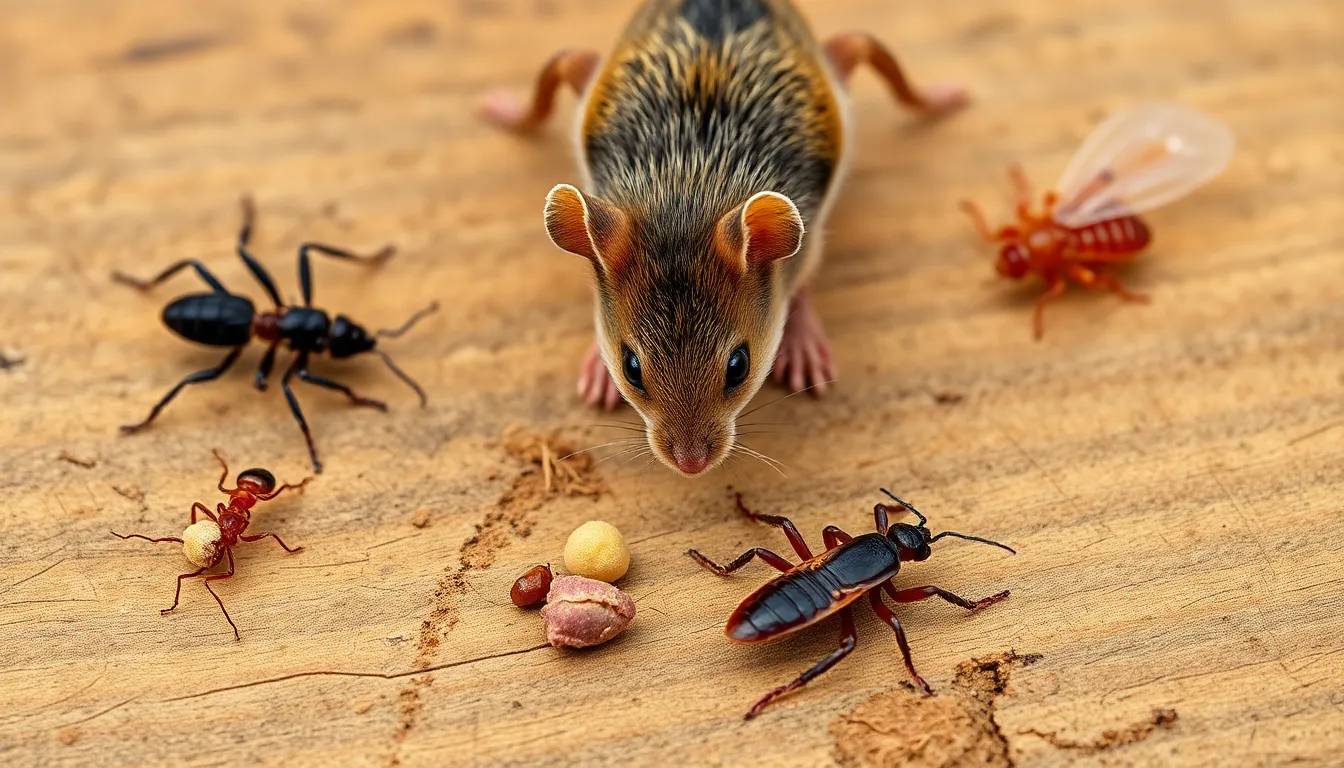When it comes to home sweet home, nothing ruins the vibe faster than uninvited guests—especially the creepy-crawly kind. Whether it’s ants marching in formation or a mouse throwing a house party, pests can turn a cozy abode into a chaotic battleground. But fear not, because with the right home pest response, those little intruders won’t stand a chance!
Table of Contents
ToggleOverview of Home Pest Response
Home pest response involves a strategic approach to managing and eliminating unwanted pests like ants, mice, and other intruders. An effective response system prioritizes prevention, detection, and treatment to maintain a pest-free environment.
Understanding the types of pests commonly found indoors is crucial. Rodents, such as mice, can cause damage by chewing through wires and insulation. Ants often forage for food, while termites silently weaken wooden structures. Identifying these threats enables homeowners to deploy appropriate measures.
Implementing preventative actions starts with routine inspections. Regular checks for entry points, such as cracks and gaps, help reduce pest accessibility. Effective sanitation measures deter pests from invading. Keeping food sealed and cleaning up spills quickly eliminates attractants.
When pests are detected, immediate action is essential. Use traps for rodents and baits for insects, which provide targeted responses. Some homeowners prefer professional services for comprehensive treatment plans. Pest control companies offer expertise and often use integrated pest management systems.
Monitoring pest activity remains important even after treatment. Continual vigilance helps prevent re-infestation. Scheduling follow-up inspections ensures that any resurgence can be addressed promptly.
Emphasizing a proactive, informed approach contributes significantly to successful home pest response. Incorporating knowledge of pests and effective management techniques leads to long-term solutions. By prioritizing prevention and response strategies, homeowners safeguard their living spaces against potential disruptors.
Common Household Pests

Household pests can create significant disruptions. Recognizing these pests and understanding their signs ensures effective management.
Identification of Pests
Identifying common household pests is the first step in effective response. Ants typically showcase small, elongated bodies with distinct colors, such as black or red. Mice are recognizable by their furry bodies, long tails, and pointed snouts. Cockroaches often appear reddish-brown with a flat shape and long antennae. Termites can be identified by their wood-eating habits, significantly damaging structures and furniture. Understanding these characteristics aids in swift identification, fostering timely pest control actions.
Signs of Infestation
Spotting signs of infestation enables early intervention. Droppings from rodents often accumulate near food sources or nesting areas. Unusual grease trails on surfaces indicate frequent mouse activity. Ant trails appear as small lines of ants moving toward food. Damage to wood or furniture, like hollowed-out spots, suggests termite presence. In addition, the sight of discarded wings can signal new termite colonies. A keen observation of these signs leads to proactive measures, minimizing potential damage and discomfort.
Prevention Strategies
Effective pest prevention hinges on maintaining a clean environment and securing potential entry points. These strategies reduce the likelihood of pest invasions in living spaces.
Maintaining a Clean Home
A clean home significantly lowers pest attraction. Regularly dispose of food waste and keep surfaces clear of crumbs and spills. Routine vacuuming captures debris that might attract pests. Store food items in airtight containers to eliminate easy access for insects and rodents. Address clutter in home areas to reduce hiding spaces and create a more inviting environment for residents rather than pests. Monitoring damp areas also aids in preventing pest attraction, as many pests thrive in moisture.
Sealing Entry Points
Sealing entry points is crucial for preventing pests from entering. Inspect the exterior of the home for cracks and gaps around doors and windows. Caulking these openings effectively blocks pests like ants and mice. Adding door sweeps minimizes gaps underneath doors that pests can exploit. Evaluating vents and utility openings completes the safeguarding process, creating a more impenetrable barrier against unwanted intruders. Regular maintenance of the foundation further prevents pest entry by addressing potential vulnerabilities. Ensuring all entry points are secure is a proactive step in pest prevention.
Professional Pest Control Options
Professional pest control services offer essential support for homeowners facing infestations. These experts utilize specialized methods to eliminate unwanted pests efficiently.
Types of Services Offered
Companies provide various services tailored to specific pest issues. General pest control targets common intruders like ants and roaches. Termite control protects homes by identifying and addressing wood-destroying pests. Wildlife removal handles larger invaders, such as raccoons and squirrels, ensuring safety for both humans and animals. Additionally, some services include ongoing monitoring and maintenance programs. These proactive measures help prevent future infestations, creating a more secure living environment.
Benefits of Hiring Professionals
Hiring pest control professionals brings multiple advantages. Experts possess comprehensive knowledge about pest behavior and effective treatment methods. They use specialized equipment and eco-friendly products, ensuring safety for families and pets. Professionals save homeowners time and effort by quickly implementing targeted solutions. Regular service visits create peace of mind, reducing the risk of recurrent infestations. Ultimately, investing in professional pest management leads to a pest-free home, protecting both structure and well-being.
DIY Pest Control Methods
Homeowners can effectively manage pests using various DIY methods. Both natural remedies and chemical treatments provide options for responsive action against infestations.
Natural Remedies
Using natural remedies offers a safe and environmentally friendly way to address pest issues. Essential oils like peppermint and tea tree oil repel ants and cockroaches effectively. Vinegar serves as a powerful cleaner and natural deterrent for spiders and other insects. Baking soda acts as a poison for cockroaches when combined with sugar. Diatomaceous earth, a natural insecticide, causes dehydration in pests when spread in infestations. Additionally, traps made from soap and water can capture flying insects without harsh chemicals. Implementing these methods enhances household safety while tackling pests.
Chemical Treatments
Chemical treatments bring targeted solutions for pest control in homes. Insecticides designed for specific insects prove effective against cockroaches, ants, and other common pests. Baits lure pests to consume poisonous substances, effectively managing populations. Residual sprays create barriers that repel insects for weeks after application. Foggers allow for comprehensive coverage in hard-to-reach areas. Always ensure safety by following manufacturer instructions closely. Wearing protective gear when applying chemicals reinforces personal safety while addressing infestations effectively. Use these methods cautiously to maintain a balanced approach to pest management.
Home pest response is vital for maintaining a comfortable and safe living environment. By understanding the behaviors of common pests and implementing effective prevention strategies, homeowners can significantly reduce the risk of infestations. Regular inspections and sanitation practices play a crucial role in keeping pests at bay.
When faced with an infestation, swift action is essential. Whether opting for DIY methods or enlisting professional help, addressing the problem promptly ensures a pest-free home. Continuous monitoring and maintenance after treatment are key to preventing re-infestation.
With a proactive approach and informed strategies, homeowners can protect their spaces from unwelcome intruders and enjoy peace of mind in their homes.


